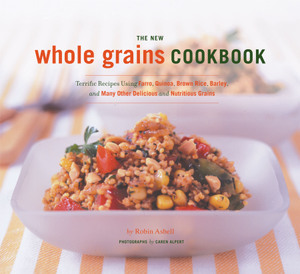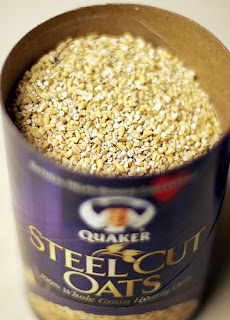One reason that soft drinks are linked to obesity may be because they are often consumed with fast foods that are loaded with fat.
The sugar in the soft drink activates the pancreas to produce insulin, but insulin
also tells the body
to store fat. So, as the pancreas is feeling the effects of the soda, the hamburger and fries arrive, and since the body has more insulin than it needs for the meal....
it stores the fat instead of burning it. Aha!
Source:
Foods that Harm, Foods that Heal, Reader's Digest
Now for the information you may not want to hear, but really should: 15 reasons not to drink soda of any type.
1.
Diabetes
Drinking one soda per day increases your risk of diabetes by 85%. Anything that promotes weight gain increases the risk of diabetes. High consumption of sugar-sweetened beverages is associated with a greater magnitude of weight gain by providing excessive calories and large amounts of rapidly absorbable sugars.
2.
Extra Weight/Obesity
A child’s obesity risk jumps 60% for every soft drink or sugar-sweetened drink a child drinks a day. One can of soda has about 10 teaspoons of sugar, 150 calories, 30 to 55 mg of caffeine, and is loaded with artificial food colors and sulphites. Just one extra can of soda per day can add as much as 15 pounds to your weight over the course of a single year!
3.
Increased Body Acidity
Disease thrives in an acidic environment so it’s best to maintain healthy pH levels. Sodas are very acidic: a typical can of soda has a pH level of approximately 2.5; diet sodas are even more acidic. Normal blood pH is between 7.3 and 7.45. It takes 32 glasses of water to neutralize the effects of the acidity of one can of soda.
4.
Altered Intestinal Bacteria, Weight Issues
Having the right bacteria in your gut has an enormous influence on your health. A high-sugar diet alters intestinal bacteria, making losing weight more difficult. Intestinal flora, sometimes called “good” bacteria, is vital for the proper digestion of food and assimilation of nutrients into the blood. When digestive bacteria is out of balance or otherwise altered, the body is unable to convert otherwise indigestible foods into digestible form.
5.
Osteoporosis
Soft drinks contain large amounts of phosphorus, which pulls calcium from the bones. Heavy users of soft drinks may develop osteoporosis. There is concern that drinking a few cans of soda can be damaging when they are consumed during the peak bone-building years of childhood and adolescence.
6.
Tooth Decay
Sugar isn’t the only soft drink ingredient that causes tooth problems. The acids in soda pop also etch tooth enamel in ways that can lead to cavities. Acid begins to dissolve tooth enamel in only 20 minutes. Phosphoric acid in sodas has an acidity that approaches the level of battery acid.
7.
No Nutritional Value
Sodas have no vitamins or minerals and are just empty calories. These empty calories suppress your appetite for healthy food. And chances are if you are drinking soda to quench your thirst, you are drinking less water which is what your body really needs.
8.
Higher Cancer Risk
Numerous studies have shown the link between sugar and increased rates of cancer, suggesting that regulating sugar intake is key to slowing tumor growth.
* Sugar intake is a strong risk factor that contributes to higher breast cancer rates, particularly in older women.
* One study revealed soda drinkers have an increased risk of esophageal (throat) cancer (ACE). The study discovered that the average soda drinker consumed over 32,000 additional minutes of acid exposure a year.
* According to another study, women who consume a high dietary glycemic load may increase their risk of colorectal (colon) cancer.
9.
Gastrointestinal Issues
The acids in sodas corrode stomach linings and upset the alkaline-acid balance of the kidneys and stomach. Heavy soda consumption is a strong predictor of heartburn. Sodas deliver air in the form of carbon dioxide, which causes distention of the stomach, which is associated with more reflux.
10.
Chemicals Leached From Aluminum Cans and Plastic Bottles
Most sodas come in either aluminum cans or plastic bottles.
* Aluminum is absorbed and accumulated in the body. It’s been found that aluminum exposure increases Alzheimer’s risk as well as other serious illnesses including osteoporosis, extreme nervousness, anemia, headache, decreased liver and kidney function, forgetfulness, speech disturbances and memory loss.
* Many types of plastic bottles still contain bisphenol-A (BPA) and phthalates, both of which are hormone-mimicking chemicals that can potentially cause many health problems including reproductive abnormalities, diabetes, neurological problems, heart disease, and cancer. The FDA changed their position and now warns about BPA risks.
11.
Increase Incidence of Fatty Liver Disease
A study found a link between drinking soft drinks and fruit juice and developing Non-Alcoholic Fatty Liver Disease (NAFLD). This is a concern because, in the long-term, this liver condition can contribute to heart disease, diabetes, cirrhosis of the liver, and liver cancer.
12.
Kidney Stones and Kidney Disease
Drinking soda doubles the risk of kidney disease. Colas in particular seem to promote kidney stones. Your body must buffer the acidity of soft drinks with calcium from your own bones. As this calcium is eliminated through your urine, it slowly forms kidney stones.
13.
Hyperactivity and Mental Problems
A Norwegian study has shown that teens who drink the largest quantities of sugary soft drinks also have more mental health problems, including hyperactivity and distress.
14.
Potassium Depletion, Paralysis
A recent study of cola-induced hypokalaemia (abnormally low potassium concentration in your blood) suggests that potassium depletion is yet another soft drink-related health problem. From Mercola.com:
The problem is that if you’re a chronic soda drinker, you’re likely to develop obesity, hypertension, and diabetes, which in turn will make you more vulnerable to the potentially lethal effects of chronically low potassium levels, which include muscle paralysis and cardiac arrhythmias.
15.
Gout
Men who drink two or more sugary soft drinks a day have an 85 percent higher risk of gout than those who drink less than one a month. Gout causes painful, swollen joints, usually in your lower limbs, caused when uric acid crystallizes out of your blood into your joints.
And if that wasn’t enough information, here is a bit more:
What Happens to Your Body Within an Hour of Drinking a Coke
From Mercola.com and The Nutrition Research Center:
Within the first 10 minutes, 10 teaspoons of sugar hit your system. This is 100 percent of your recommended daily intake, and the only reason you don’t vomit as a result of the overwhelming sweetness is because phosphoric acid cuts the flavor.
Within 20 minutes, your blood sugar spikes, and your liver responds to the resulting insulin burst by turning massive amounts of sugar into fat.
Within 40 minutes, caffeine absorption is complete; your pupils dilate, your blood pressure rises, and your livers dumps more sugar into your bloodstream.
Around 45 minutes, your body increases dopamine production, which stimulates the pleasure centers of your brain – a physically identical response to that of heroin, by the way.
After 60 minutes, you’ll start to have a sugar crash.
Source:
Parenting Tips 365


































